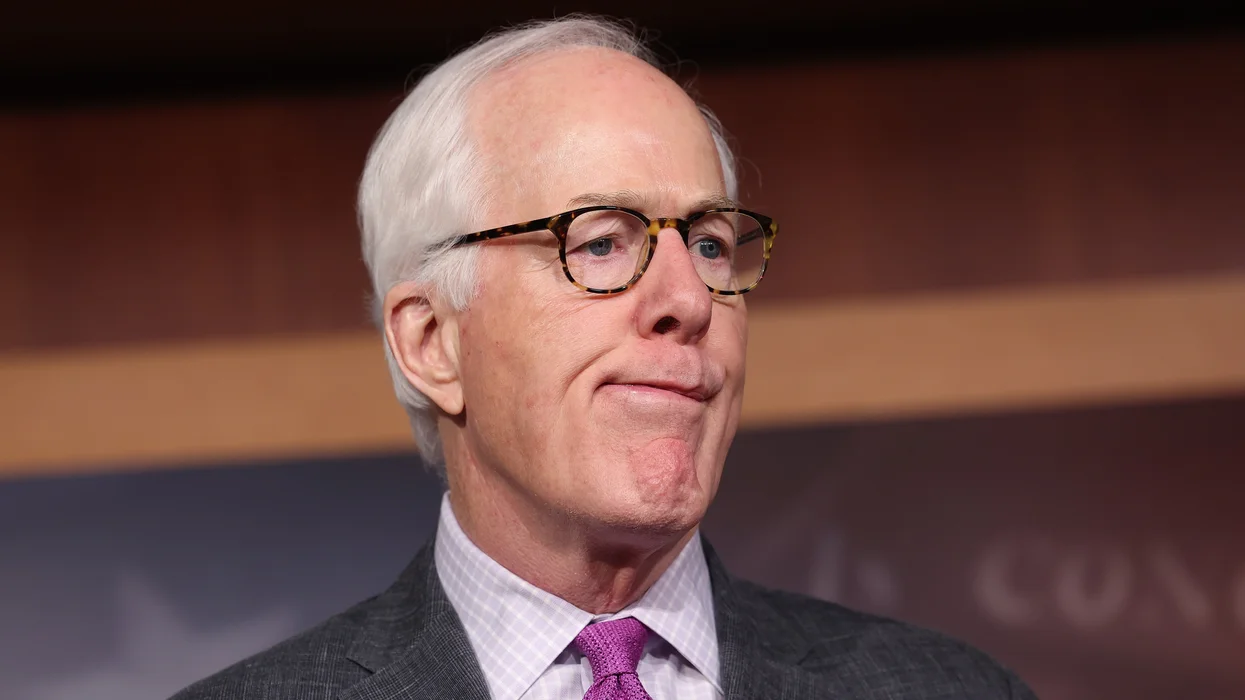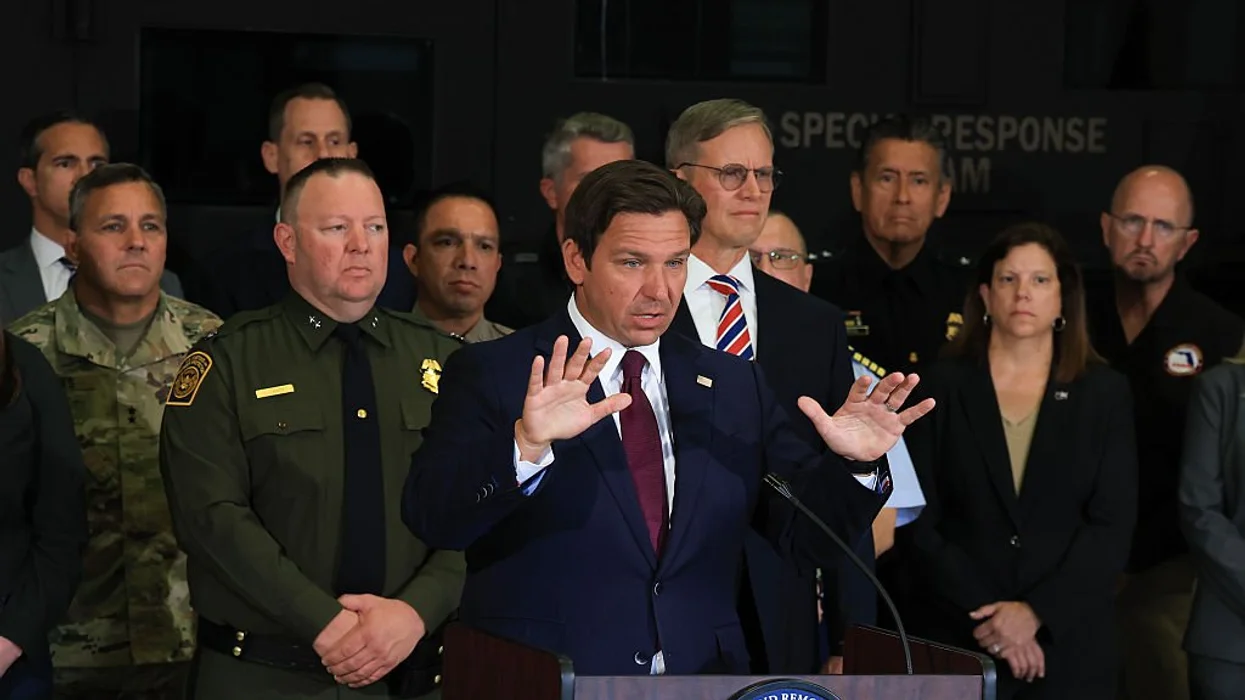
© 2025 Blaze Media LLC. All rights reserved.
Gov't Report Says Energy Producers in 11 States Should Create No-Activity Buffer to Protect Threatened Birds
November 21, 2014
BILLINGS, Mont. (AP) — A government report with significant implications for the U.S. energy industry says the breeding grounds of a struggling bird species need a 3-mile or larger buffer from oil and gas drilling, wind farms and solar projects.
The study comes as the Obama administration weighs new protections for the greater sage grouse, a ground-dwelling bird that ranges across 11 western states.
The 3-mile buffer is a much larger protective area for the bird than the no-activity zones where drilling and other activity is prohibited under some state and federal land management plans.
 Two sage grouse roosters on the periphery of the lek, the "dancing grounds" where grouse come to mate south of Rockland, Idaho, challenge each other for hens. A small portion of a federal judge�s ruling in Idaho against the U.S. Bureau of Land Management concerning grazing permits in sage grouse habitat is being eyed as a potential lever by environmental groups considering similar lawsuits in other states. (AP/The Idaho State Journal, Bill Schaefer, File)
Two sage grouse roosters on the periphery of the lek, the "dancing grounds" where grouse come to mate south of Rockland, Idaho, challenge each other for hens. A small portion of a federal judge�s ruling in Idaho against the U.S. Bureau of Land Management concerning grazing permits in sage grouse habitat is being eyed as a potential lever by environmental groups considering similar lawsuits in other states. (AP/The Idaho State Journal, Bill Schaefer, File)
However, those plans contain more nuanced provisions that backers say will protect sage grouse— such as seasonal restrictions on drilling and limits on the number of oil and gas wells within key sage grouse habitat.
Greater sage grouse populations dropped sharply in recent decades due to disease, pressure from the energy industry, wildfires and other factors.
Friday's report from the U.S. Geological Survey comes as state and federal officials scramble to come up with conservation measures to protect the grouse ahead of a court-ordered September 2015 decision on protections.
A related bird, the Gunnison sage grouse of Utah and Colorado, received federal protection as a threatened species on Nov. 12.
The USGS report on the more-common greater sage grouse represents a compilation of scientific studies aimed at seeing what it takes to protect the bird.
It was requested by the U.S. Department of Interior's Bureau of Land Management, the federal agency that oversees millions of acres of sage grouse habitat and also regulates the energy industry across much of the West.
It said a buffer of at least a 3.1-mile radius around sage grouse breeding sites known as leks would provide considerable protections for the bird. That radius would equal a circle around the leks covering 30 square miles.
 A government study recommends keeping oil and gas drilling, wind farms and solar projects more than 3 miles away from the breeding grounds of a bird that ranges across much of the Western U.S. a finding that could carry significant impacts for the energy industry as the Obama administration weighs whether the greater sage grouse needs more protections after seeing its population plummet in recent decades. (AP/U.S. Fish and Wildlife Service,Tom Koerner)
A government study recommends keeping oil and gas drilling, wind farms and solar projects more than 3 miles away from the breeding grounds of a bird that ranges across much of the Western U.S. a finding that could carry significant impacts for the energy industry as the Obama administration weighs whether the greater sage grouse needs more protections after seeing its population plummet in recent decades. (AP/U.S. Fish and Wildlife Service,Tom Koerner)
By comparison, Montana and Wyoming have adopted management plans for the bird that call for a no-surface occupancy zone of six-tenths of a mile around leks in key sage grouse habitat. That's an area of less than 4 square miles.
But the state plans also limit human activity within a larger area around breeding and nesting seasons. And they take into account cumulative impacts, such as a restriction in Wyoming that limits oil companies to one well pad per square mile in key habitat. That keeps sage grouse habitat intact, Wyoming Petroleum Association Vice President Esther Wagner said.
"That reduces [habitat] fragmentation, which is what it all comes down to," Wagner said. "It's working here."
The USGS did not recommend specific management recommendations. But survey scientists said it should help the Interior Department as it crafts a conservation strategy for the birds.
Carol Schuler, USGS senior science adviser, said that land managers also need to take into consideration local conditions across the grouse's sprawling, 257,000-square-mile habitat. She said the buffer recommendation was meant to offer a reference point as more localized decisions are made.
"It's really up to the management agencies on how they use this information," Schuler said.
Want to leave a tip?
We answer to you. Help keep our content free of advertisers and big tech censorship by leaving a tip today.
Want to join the conversation?
Already a subscriber?
more stories
Sign up for the Blaze newsletter
By signing up, you agree to our Privacy Policy and Terms of Use, and agree to receive content that may sometimes include advertisements. You may opt out at any time.
Related Content
© 2025 Blaze Media LLC. All rights reserved.
Get the stories that matter most delivered directly to your inbox.
By signing up, you agree to our Privacy Policy and Terms of Use, and agree to receive content that may sometimes include advertisements. You may opt out at any time.





